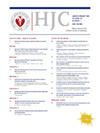肥厚型心肌病范式的转变:运动在疾病管理中的作用。
IF 3
3区 医学
Q2 CARDIAC & CARDIOVASCULAR SYSTEMS
引用次数: 0
摘要
传统上,肥厚型心肌病(HCM)因其潜在风险而被限制运动,但最近的证据和指南建议对低风险人群采取更宽松的态度。本综述旨在研究运动对该人群心血管预后、安全性和生活质量的影响,并考虑对临床实践的影响。最近的研究表明,HCM 低危人群定期运动和体育锻炼可在功能能力、血流动力学反应和生活质量方面产生积极的结果,且具有持续的安全性。多项研究强调了中等强度运动的安全性,表明运动能力得到提高,但不会出现不良的心脏重塑或明显的心律失常。有报告称,有组织的运动计划还能带来心理上的益处,包括减少焦虑和抑郁。这些研究结果支持将个性化运动方案纳入 HCM 低风险患者的管理中,从而改善整体健康和心血管健康。建议采用 FITT 原则、考虑个体风险情况并共同决策。未来的研究需要明确参与运动的 "低风险 "定义,并调查体育锻炼对 HCM 疾病进展的影响。治疗策略和生活方式干预措施的创新,以及患者和医疗服务提供者教育的改进,将有助于促进 HCM 患者参与运动的护理和安全性。本文章由计算机程序翻译,如有差异,请以英文原文为准。

Shifting paradigms in hypertrophic cardiomyopathy: the role of exercise in disease management
Hypertrophic cardiomyopathy (HCM) is traditionally associated with exercise restriction due to potential risks, yet recent evidence and guidelines suggest a more permissive stance for low-risk individuals. The aim of this comprehensive review was to examine existing research on the impact of exercise on cardiovascular outcomes, safety, and quality of life in this population and to consider implications for clinical practice. Recent studies suggest that regular exercise and physical activity in low-risk individuals with HCM are associated with positive outcomes in functional capacity, haemodynamic response, and quality of life, with consistent safety. Various studies highlight the safety of moderate-intensity exercise, showing improvements in exercise capacity without adverse cardiac remodelling or significant arrhythmias. Psychological benefits, including reductions in anxiety and depression, have been also reported following structured exercise programmes. These findings support the potential benefits of integrating individualised exercise regimens in the management of low-risk individuals with HCM, with the aim of improving their overall well-being and cardiovascular health. Adoption of the FITT (frequency, intensity, time, and type of exercise) principle, consideration of individual risk profiles, and shared decision-making are recommended. Future research is warranted to clarify the definition of ‘low risk’ for exercise participation and investigate the influence of physical activity on disease progression in HCM. Innovation in therapeutic strategies and lifestyle interventions, alongside improved patient and provider education, will help advance the care and safety of individuals with HCM engaging in exercise.
求助全文
通过发布文献求助,成功后即可免费获取论文全文。
去求助
来源期刊

Hellenic Journal of Cardiology
CARDIAC & CARDIOVASCULAR SYSTEMS-
CiteScore
4.90
自引率
7.30%
发文量
86
审稿时长
56 days
期刊介绍:
The Hellenic Journal of Cardiology (International Edition, ISSN 1109-9666) is the official journal of the Hellenic Society of Cardiology and aims to publish high-quality articles on all aspects of cardiovascular medicine. A primary goal is to publish in each issue a number of original articles related to clinical and basic research. Many of these will be accompanied by invited editorial comments.
Hot topics, such as molecular cardiology, and innovative cardiac imaging and electrophysiological mapping techniques, will appear frequently in the journal in the form of invited expert articles or special reports. The Editorial Committee also attaches great importance to subjects related to continuing medical education, the implementation of guidelines and cost effectiveness in cardiology.
 求助内容:
求助内容: 应助结果提醒方式:
应助结果提醒方式:


